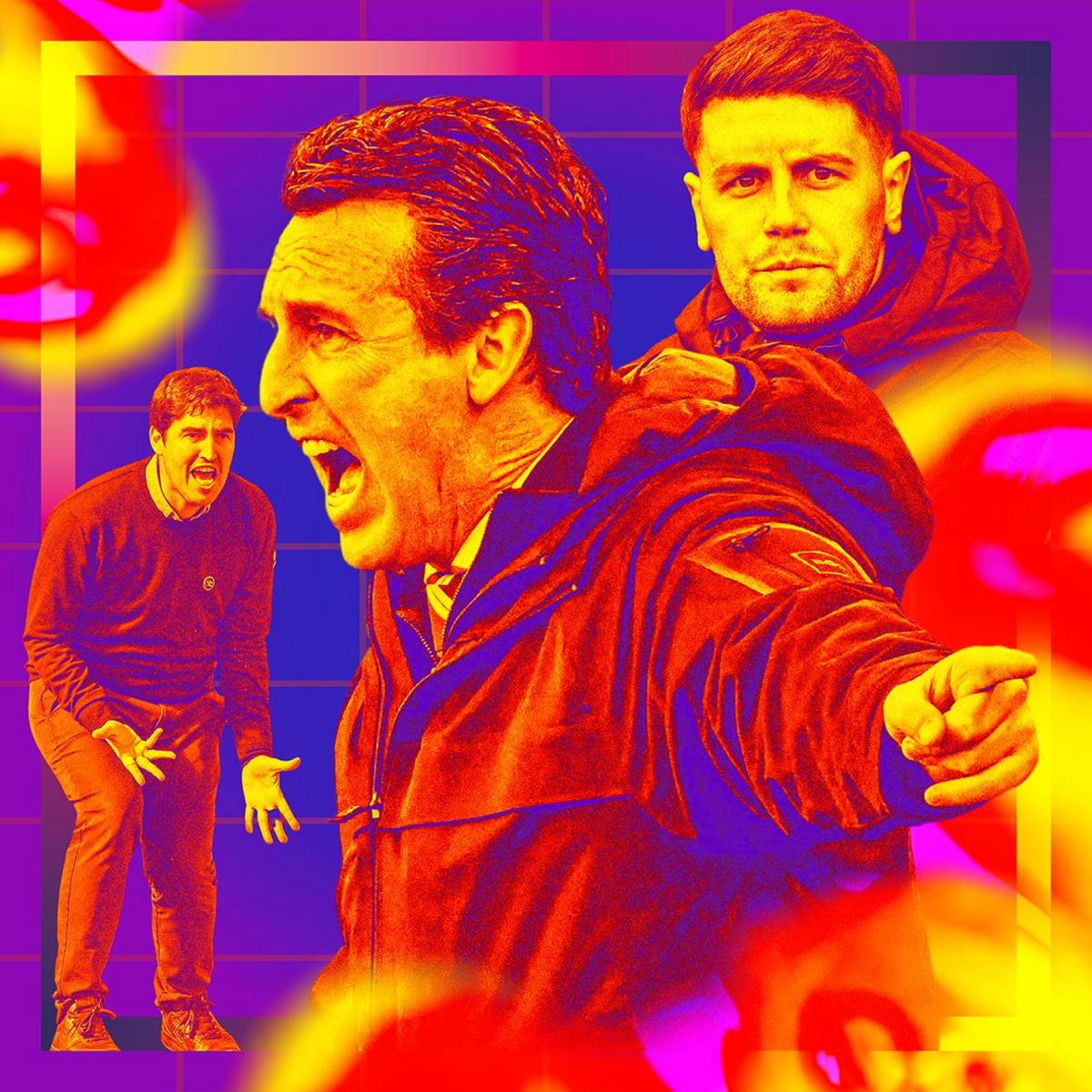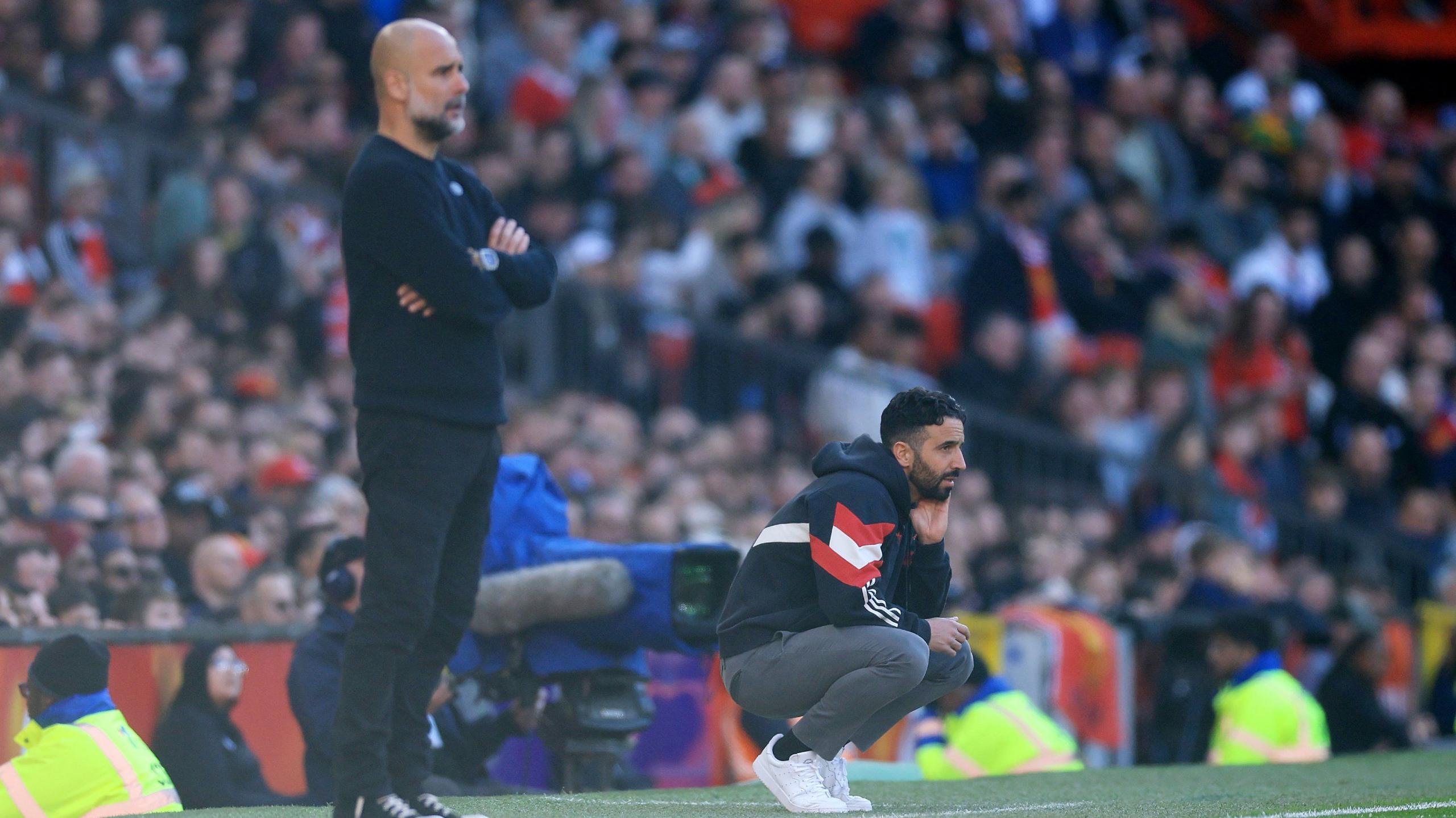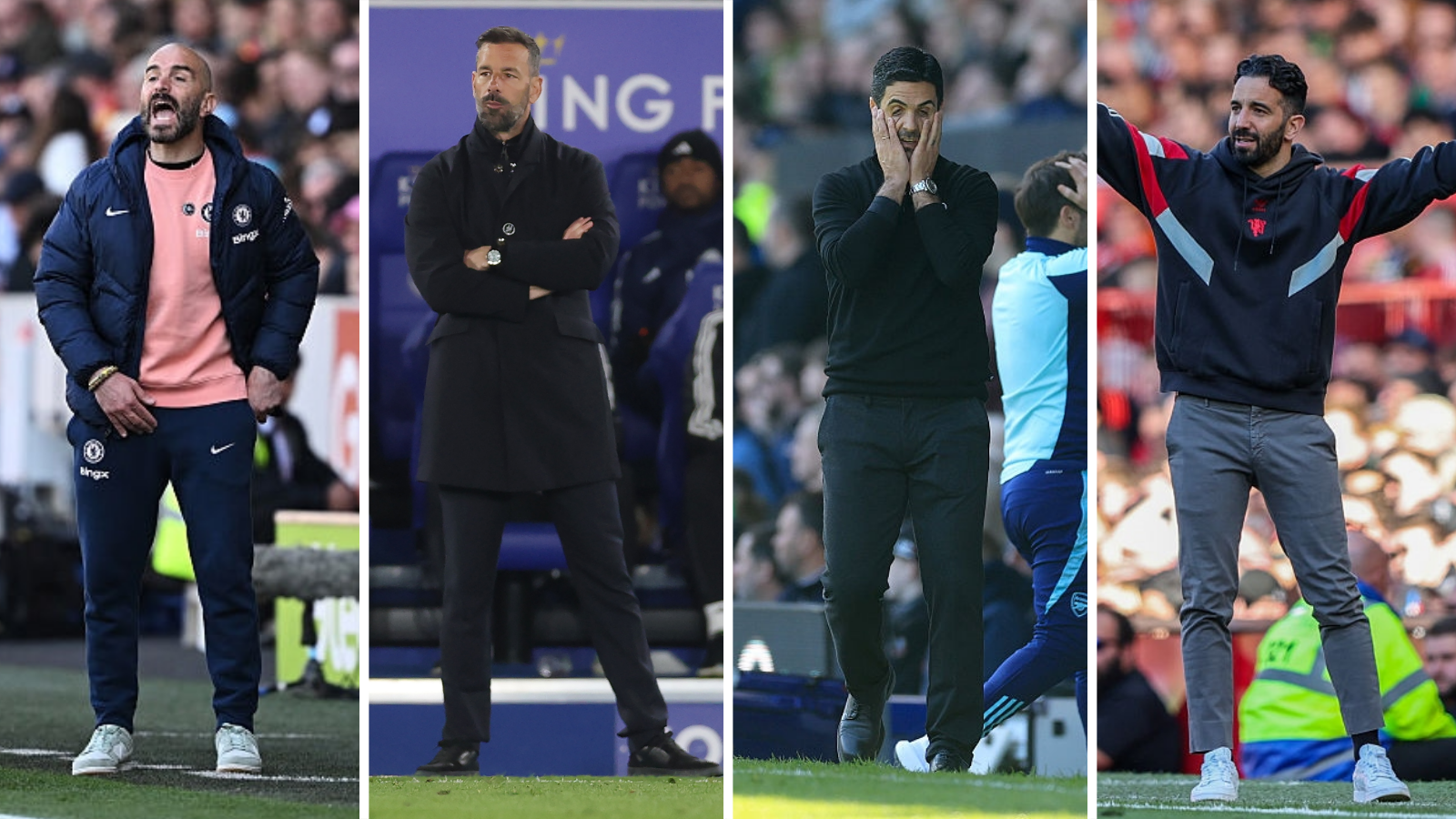
Gary Rose
BBC Sport journalist
Brendon Mitchell
BBC Sport journalist
If you went to watch a football match at the weekend, it’s likely you were glued to the action on the pitch rather than what was happening off it.
And the first thing you probably told your friends and family about after the game was the great goal, the extraordinary save or the eye-catching skill you witnessed.
It turns out, however, there’s a whole other sideshow happening just a few feet from the touchline.
“It’s psychology in action,” said Dr Gillian Cook – senior lecturer in sport and performance psychology at Liverpool John Moores University. “Stress is incredibly high.”
That sideshow, of course, is in the dugout and technical area. And the person feeling the stress is the one responsible for what’s happening in front of them – the manager.
“They know the influence of what they do on the performance of players,” added Dr Cook, who has studied the behaviour of managers.
“Can they control their stress? Are they able to manipulate their own emotions to help their players perform or do they succumb to those emotions? Do they boil over? Do they get red cards which then will likely have a detrimental impact on the team?”
In an attempt to answer some of those questions, we sent a BBC Sport journalist to all 10 Premier League games during the most recent round of fixtures to closely watch every manager while the action unfolded.
They recorded data on where the managers stood and how they interacted with those around them, including their coaching staff, the players on the pitch and the match officials.
Here’s what we saw.


Managers spent a lot of time outside their technical area
The Laws of the Game state managers must remain within the confines of their technical area “except in special circumstances” – but that doesn’t seem to stop them regularly crossing the boundary.
On average, Premier League managers this weekend spent nearly a quarter of games standing outside of their area, getting that bit closer to the pitch, even though the distance gained could usually be measured in centimetres.
Part of that could be down to visuals.
“The players see you more and hear you more and they can actually have feedback,” said Dr Cook. “They also know that you’re there, so you can have that monitoring effect on them.
“You will see the managers point to their heads all the time to have that influence on the players to stay focused.”
Another possible reason could be for a manager to be alone with their thoughts.
When sitting in the dugout, a manager will have their coaching staff around them, plus substitutes and other staff members who could all be voicing their opinions.
Former Leicester City boss Nigel Pearson said cancelling out the noise would be a reason why he would go to the edge of his technical area.
“Yes, there have been times I’ve done that,” Pearson told BBC Sport. “There have also been times I’ve asked someone else to go out so they can clear their heads.”
Dr Cook added: “It is a stressful environment in a dugout with lots of different people, lots of different voices, and lots of opinions.
“If you go out of the technical area, it could actually be a way to help alleviate your stress. You’re getting away from some of that noise and potential sensory overload.
“We know from research that crowded spaces can overwhelm the senses and can lead to feelings of overwhelmingness – you’re not able to think and plan and strategise what you’re going to do next.
“So it could also be just a way of trying to regulate your own emotions.”
Chaos on the pitch? Try staying calm off it
When all is falling apart on the pitch, a manager can play their part in trying to motivate their players and calm hot heads.
How this is done can vary, from being an animated presence to spur the team on or providing an aura of calm in the hope it transfers on to the pitch.
On Saturday, Brighton were 2-1 down against Crystal Palace and chasing an equaliser. It all got a bit chaotic towards the end of the game as three red cards were shown two to Palace and one to Brighton.
Yet for the majority of the second half, and despite having spent more than half of the opening 45 minutes outside of his technical area altogether, Seagulls boss Fabian Hurzeler sat in the dugout, when he might have been expected to be driving on his team from the edge of the technical area.
“There’s a concept in psychology called emotional labour,” said Dr Cook. “It originally comes from the airline industry of service with a smile – it doesn’t matter what you feel, you’ve got to act in a certain way because that’s what you think is expected of you.
“If you’re a football manager there is data suggesting that if you look calm, composed and in control, that will transmit and convey to the players. So the more calm you look, the more calm your players will be, and they’ll then have the headspace to go out and execute whatever your gameplan is.”

Manchester City boss Pep Guardiola and Manchester United manager Ruben Amorim both prowled the edge of their technical areas during Sunday’s derby between the sides, which ended in a disappointing 0-0 draw
One-man show or a team effort?
The weekend’s action also showed there are managers who prefer to be the sole presence in the technical area, while others are happy to let their assistants take charge at times.
Brentford boss Thomas Frank, for example, frequently welcomed input from his staff, while Chelsea manager Enzo Maresca in the opposite dugout rarely retreated to his bench to seek a second opinion.
For Pearson, his coaching staff played just as an important role as he did.
He even used their different strengths to be able to ensure messages were getting through to players on the pitch as efficiently as possible.
“You have to understand the players you have,” said Pearson, who was most recently manager of Bristol City. “That is where I use assistants to help me.
“If you think about a coaching staff in its entirety there will be people who have certain connections with individual players that will have a meaningful effect. Rather than just being there shouting just to be seen, it is more about communicating with individuals on the pitch.
“You can have players who are quite sensitive and you have to be mindful of how those players will accept Information. At Bristol City, for instance, with people like Curtis Fleming and Jason Euell, they are both totally different types of personalities. Use the right people to make the connections.”
However, Pearson said there were times it was necessary to be the main presence in the technical area.
“There are times as a manager you have to be visible and I think that is more important when things are not going well,” he said. “It is more important you absorb some of the negativity to allow the players to play.”
Rock, paper, scissors
When it came to interactions between the managers and match officials, it was no huge surprise that was most prevalent in the game containing three red cards.
Crystal Palace boss Oliver Glasner was most perturbed as his side had both Eddie Nketiah and Marc Guehi sent off in the space of 12 minutes.
Elsewhere, Fulham boss Marco Silva was so irritated about a challenge on Rodrigo Muniz which went unpunished that referee Chris Kavanagh had to come over for a word with him.
But does getting that annoyed with officials help the players?
“On the one hand you have the positive of the manager shouting to try to influence the decision that’s being made next time,” said Dr Cook.
“But that is balanced out by the negatives because if you’re a player and you see that your manager is getting distressed or very much doesn’t agree with the decision that’s being made, that takes your focus away.”
Unsurprisingly, Tottenham manager Ange Postecoglou became most animated during a video assistant referee (VAR) check – and we all know how much he loves that.
Faced by a four-minute delay as he awaited a decision, he appeared to play a game of rock, paper, scissors to highlight the unpredictable nature of a VAR call.
“VAR is interesting because in the past they put a heart-rate monitor on Brentford manager Thomas Frank and his heart rate went up from 60 beats per minute to 108 beats per minute when a VAR decision was being made,” said Dr Cook.
“So what we saw Ange doing with rock, paper, scissors, I would suggest, could be because he was trying to distract himself – that’s another way that we can regulate the emotions.”
Does it matter what you wear?

A variety of styles can be seen on the touchline in the Premier League
Tracksuit or suit – it’s a debate as old as time.
So what did our data tell us? Predictably, very little. Five managers wore tracksuit bottoms, four of them failed to win. That’s as good as it gets.
While a manager’s attire may have nothing to do with what happens on the pitch, though, it does tell us a bit about them.
“We’ve all heard the expression power dressing,” said Dr Cook. “If you’re in a suit, particularly according to research with doctors, they’re rated as having higher authority, higher power and higher credibility.
“Obviously, that’s with doctors, not football managers. But research with sports psychologists has found that if they wear tracksuits then their sports-specific knowledge is deemed to be higher.
“So, as a manager, what do you value? Do you want people to see you as the authority figure looking different from everyone else? Or do you want to fit in in a tracksuit that will be the same as your background staff and be seen to have higher sport-specific knowledge?
“Which of those you value will then determine how you want to dress.”
Ultimately, there’s no right or wrong way to do it
We’ve pored through the data, we’ve studied the heatmaps, we’ve done the sums. Lots of sums.
One thing is clear – every manager does it their own way and sometimes that way is successful and sometimes it isn’t.
But when we asked both Dr Cook and Pearson – coming at this from different angles – what it actually all boils down to, they both used the same word: authenticity.
“A key construct in management is trust,” said Dr Cook. “Do you trust your manager? If you trust what they suggest you should do, you’re then more likely to work harder. The harder you work, the better you’re likely to perform.
“And are they acting the same way in training when they’re away from the performance arena? Or are they suddenly acting differently in a stadium? Because if there’s a difference there, then it comes away as it’s not as authentic.
“That can then reduce trust because one of the key factors that comes into trust is predictability and authenticity.”
As Pearson, who has stood in the dugout as a manager for more than 600 games, concluded: “It’s about being authentic and making sure that people have the information.”







